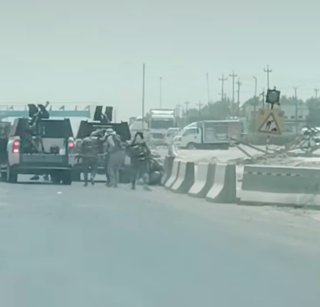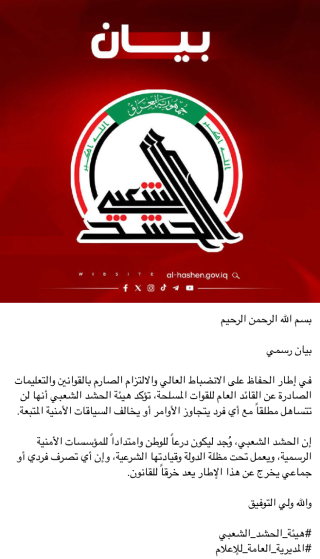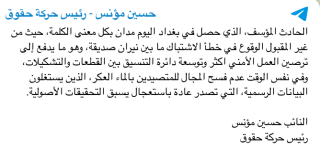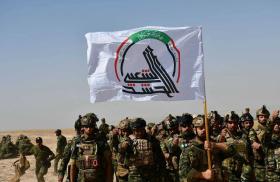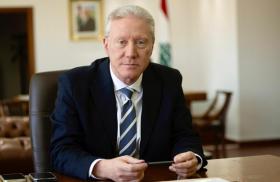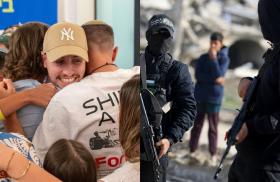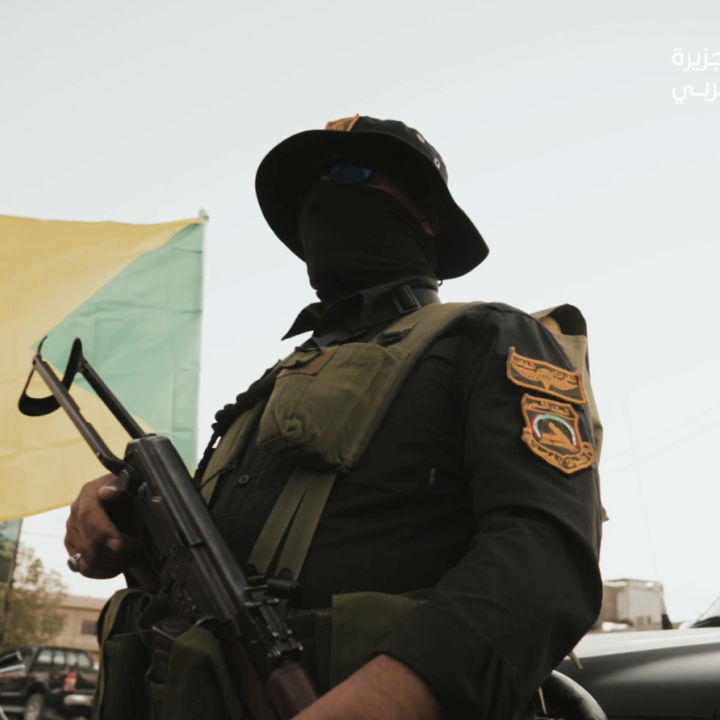
Kataib Hezbollah Kills an Iraqi Policeman and Civilian in Baghdad

The clash occurred when a KH-protected official was removed from a lucrative position that has given the terrorist group access to massive tracts of fertile farming land in southern Baghdad.
On July 27, a unit from the Iran-backed, U.S.-designated terrorist group Kataib Hezbollah (KH) clashed with Iraqi security forces in the southwestern Baghdad neighborhood of al-Saydiya, injuring several security personnel and killing one police officer and one civilian (Figure 1). Social media footage of the incident showed fighters wearing standard tactical gear typically associated with the Popular Mobilization Forces (PMF) and using pickup trucks mounted with heavy machine guns (Figure 2).
The Iraqi Joint Operations Command later confirmed the arrest of fourteen individuals accused of taking part in the clashes, stating that some belong to the 45th and 46th PMF Brigades—both of which are known to be KH units. The arrests were made at a KH location in al-Saydiya, but thirteen of those detained were house guards or bystanders; only one individual actually involved in the shooting incident was arrested. Even this limited action required the combined interventions of a PMF judge, Prime Minister Mohammed Shia al-Sudani, and Interior Minister Abdul Amir al-Shammari. Moreover, the one shooter now in custody may be released if KH brings enough pressure, as seen when the group avoided punishment for the June 2020 killing of prominent analyst Hisham al-Hashimi.
Terrorist Militias Building Up Farming Empires
The confrontation occurred after the removal of KH-affiliated figure Ayad Kadhim Ali as director of agriculture for Baghdad’s Karkh district (i.e., head of the Ministry of Agriculture's branch office for the western half of the capital region). Upon learning of his dismissal, Ali reportedly called on his benefactors in KH for support, prompting the violent altercation with government forces.
This appears to be an example of inter-militia competition gone violent. KH has been very active in using government officials to gain access to rich, well-irrigated farmlands south of Baghdad, particularly in Mahmoudiyah and Madain. In return, it has offered “protection for favors” to officials as high up as the governor of Baghdad's inner district. In 2023, senior KH official Abu Zainab al-Lami (real name Hussein Falah al-Lami), was exposed for involvement in major Baghdad property theft while serving as head of the PMF Central Security Directorate. KH’s agricultural empire—which began in 2014 with the seizure and depopulation of an entire district in Jurf al-Sakhar—seems to have annoyed the U.S.-designated terrorist Shibl al-Zaydi, another major player in southern Baghdad farming. Zaydi founded the U.S.-designated terrorist group Kataib Al-Imam Ali (40th PMF Brigade), which has patronage connections to Lebanese Hezbollah and a strong record of winning inter-militia disputes in areas around his native Wasit province, including Madain.
Fallout for KH and the PMF
The militia killing of a policeman prompted widespread reactions across the Iraqi political and security landscape. The Abbas Combat Division—a "shrine unit" (Atabat) closely aligned with Grand Ayatollah Ali al-Sistani—immediately issued a strongly worded statement condemning the clashes and denouncing the use of force against state institutions, adding, “We believe the time has come to firmly restore order and prevent any chaos that threatens the country’s stability and civil peace.” The statement did not name the exact PMF units involved, perhaps to avoid escalation.
The Coordination Framework, the Shia leadership coalition that oversees militia political factions, also condemned the attack in a July 27 statement, describing it as a “violation of the law and a departure from state authority and norms.” The PMF Commission was more vague, stating that it “will not tolerate any individual who violates orders or breaches established security protocols” (Figure 3), but without referencing the specific brigades involved or even the incident itself.
Meanwhile, Hossein Moanes, leader of the KH political wing the Hoquq Movement, issued a provocative and evasive statement. While condemning the clashes, he failed to denounce the KH fighters involved or acknowledge their role in the attack. He also criticized the Joint Operations Command for “hastily” issuing a statement naming the KH-affiliated brigades, warned against “those who take advantage of official statements, often issued hastily before formal investigations are completed, to fish in troubled waters” (Figure 4).
The incident and its aftermath underline the severe damage that Iran-backed militias have done to the Iraqi system. Massive tracts of prime farmland adjacent to Baghdad are being transferred to their hands, constituting a powerful form of terrorist threat financing—so valuable, in fact, that other terrorist militias are willing to play a role in exposing KH. At the same time, the Interior Ministry—a stronghold of the Iran-backed Badr Organization—is so feeble that it lacks the confidence to arrest the killers of a policeman in downtown Baghdad, and must get backup from the PMF itself to make even symbolic arrests of individuals who were not even involved in the killing. Although criticism of the incident is building, the only public figure willing to speak with absolute confidence has been KH's own Hossein Moanes, who can threaten any government institution that dares to name and shame the group's PMF brigades.
This is hardly the first time that Iran-backed militias tied to the Coordination Framework have shot at and intimidated the Iraqi police. Fortunately, the latest tragic incident holds the seeds of resistance to KH and other Iran-backed terrorist militias. If these seeds are to bear fruit, national-level leadership must start by vigorously supporting the military and Interior Ministry to ensure that the policeman’s death is appropriately punished.

